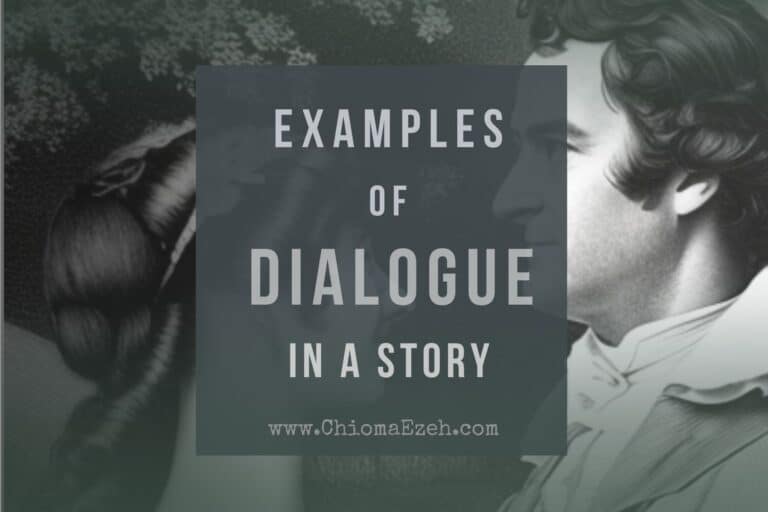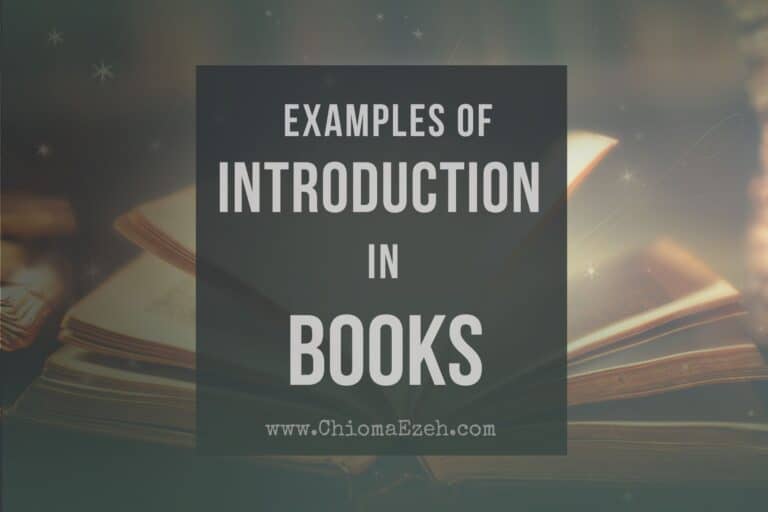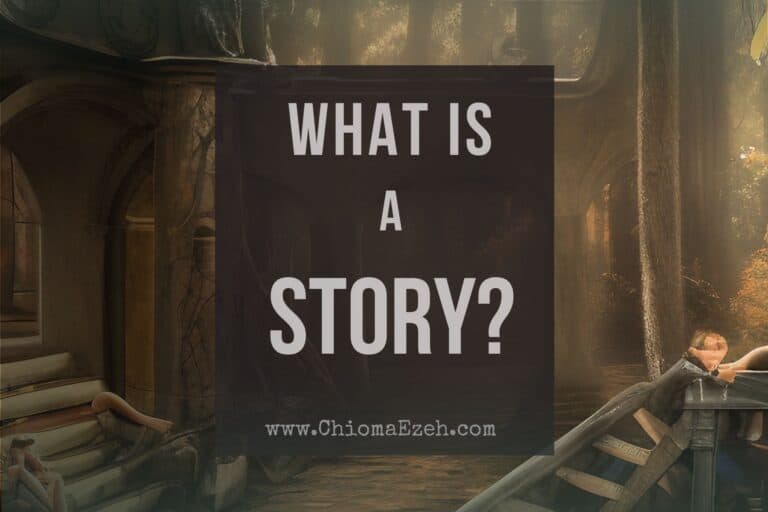What Is The Inciting Incident Of A Story? [Definition & Examples]
Writing a compelling story is no easy feat. It requires careful consideration of the elements that will keep readers engaged and eager to turn the page. One of these key components is an inciting incident, which sets off a chain reaction in your narrative arc and propels it forward.
So what exactly is an inciting incident? And how can you craft one for maximum impact? In this blog post, we’ll explore all aspects of the inciting incident of a story – from its importance to tips on writing one effectively.
👉 If you’re interested in learning about the elements of a story, head over to our complete guide
Let’s Talk
Are you a writer aspiring to pen a masterpiece that never fails to captivate? Look no further. Reach out to us and uncover how we can help you to take your writing to unprecedented heights!

What is the Inciting Incident in a Story?
A story’s inciting incident is the key event or plot point that radically upsets the protagonist’s life and sets off the entire story. It takes place early on in the story, usually within the first 10-15% of it, and doesn’t necessarily have to be exciting.
The inciting incident is the moment when something takes place that changes the character’s world and makes them embark on a journey of discovery, action, and adventure. Without this critical piece of storytelling, there can be no great stories.
In fact, many famous inciting incidents are actually quite subtle but still effective at creating suspense and drawing the reader’s attention. Think about Harry Potter for example – his parents were killed when he was just a baby which set off his hero’s journey but the inciting incident doesn’t take place until almost halfway through Sorcerer’s Stone.
Again, the inciting incident doesn’t necessarily have to be exciting; it just needs to create suspense and draw readers’ attention by introducing an intriguing problem or question for the main character (and reader) to explore throughout the rest of the book.
It’s important to understand why this moment is so pivotal when crafting your own stories, which we will discuss further in our next heading.
Why is inciting incident important in a story?
An inciting incident creates suspense and grabs readers’ attention right away. It also helps to introduce the main characters and themes of your story while setting up its structure for future events. The inciting incident often serves as a catalyst for further plot points or conflicts within your story arc.
Here are reasons why having an effective inciting incident is essential for any good story
- It provides insight into your protagonist’s motivations
- gives clues about where the rest of the narrative could go
- poses questions that keep readers engaged during their journey with you
- sets up stakes early on in order to increase tension throughout
- allows exploration of deeper themes more effectively
- keeps audiences captivated from start to finish
The inciting incident serves to ignite the plot and set up the main conflict. You must understand the power of this story element in order to craft gripping tales that will keep readers hooked.
How Can You Identify Inciting Incident In A Story?
A good way to identify your story’s inciting incident is by asking yourself what exciting event takes place at or near your story’s beginning that drastically affects your main character’s life. This should also lead you into exploring what themes your story explores, how each scene further develops those themes, and how they contribute towards creating a strong narrative structure for your entire story arc.
Identifying good inciting incidents requires you to think critically about your own writing process; ask yourself
- what event takes place here which could drastically alter my character’s life?
- What implications does this have for my writing?
- How can I use these elements together effectively?”
Once you’ve identified your story’s inciting incident, everything else should fall into place more easily. Now let us take a look at some examples of inciting incidents in popular stories.
Examples of Inciting Incident In Popular Stories
Example 1: Harry Potter and the Sorcerer’s Stone
Take Harry Potter as an example: when Hagrid tells him he’s a wizard at age 11, this is his inciting incident—it radically changes his life and sets off a series of events that will ultimately determine how his hero’s journey plays out. This moment also serves as one of your story’s themes: growing up means accepting new responsibilities and facing challenges head-on.
So, we can see how Rowling uses an inciting incident to set the plot in motion. Harry’s world is suddenly upended when he learns of his magical heritage and receives an invitation to Hogwarts School of Witchcraft and Wizardry. The revelation of Harry’s magical abilities and the invitation to Hogwarts act as a spark that ignites all of the following events, culminating in his ultimate confrontation with Voldemort.
Example 2: Jaws
Good stories often include several smaller inciting moments leading up to one big one. In Jaws, for instance, there are multiple instances where people get attacked by sharks prior to Chief Brody learning about what happened on Amity Island—but it isn’t until then that we really understand why he has such an aversion towards water.
This becomes our main plot point for moving forward with the rest of our narrative arc; without it, nothing else would make sense or seem important enough for us to care about what happens next in our hero’s journey.
Example 3: Alice In Wonderland
Alice follows a seemingly innocuous white rabbit that turns out to be tardy for its tea party, leading her into an astonishingly peculiar Wonderland where she embarks on extraordinary escapades before ultimately making it back home wiser than ever. Once Alice enters Wonderland, things become even stranger than before and lead her on many adventures before finally returning home safe.
These are a few examples of inciting incidents in popular stories that demonstrate the importance of this key plot point, and how it sets up the story for success.
👉 To see more examples from popular stories, check out our guide on Examples of Inciting Incidents In Books.
How to Write an Effective Inciting Incident?
Writing an effective inciting incident is essential to crafting a great story. It’s the key event that sets your entire story in motion, and it should be one of the first things you consider when you’re writing.
Let’s start with a hook or surprise element. To pique readers’ curiosity, an intriguing event or character could be introduced that furthers the plot and reveals more about your protagonist’s motivations.
You could introduce a mysterious stranger who arrives just as something strange is about to happen, create suspense by foreshadowing future events, or even have an unexpected event take place that changes everything for your protagonist.
The important thing here is not only making sure it grabs reader’s attention but also making sure it ties into your story’s themes and further develops characters’ motivations throughout the narrative arc.
Finally, use tension and suspense through foreshadowing whenever possible so that readers are left wondering what will happen next.
👉 To see more examples from popular stories, check out our guide on writing Inciting Incidents tips.
What Happens After the Inciting Incident in a Story?
After the inciting incident has occurred in a story, it is followed by rising action. This is where the protagonist begins to take steps toward resolving the conflict and problem presented at the beginning of the story.
As the protagonist faces and overcomes each obstacle, tension builds up until they reach a point of resolution. Obstacles can be anything from tangible dangers to psychological struggles and ethical quandaries. As each obstacle is faced and conquered by the protagonist, tension increases until it reaches a climax.
👉 To learn more, read our guide to rising action in a story
Final Notes On Inciting Incident In A Story
The inciting incident of a story is an important element that can help to propel the plot forward. It sets up the main conflict and gives readers something to look forward to as they follow along with the characters’ journey.
It’s important to craft this scene carefully as it serves as the foundation for your plot and characters. Keep in mind that effective inciting incidents should be unexpected, have consequences, involve stakes, and create tension.
Once you understand the significance of an inciting incident and how to craft them, you can begin creating captivating narratives. With these tips in mind, start crafting your next great work today.


![What Are The 10 Rules Of Dialogue Punctuation? [Mandatory]](https://chiomaezeh.com/wp-content/uploads/2023/03/rules-of-dialogue-punctuation-768x512.jpg)



![5 Types Of Outer Dialogue You Should Know [Free Template]](https://chiomaezeh.com/wp-content/uploads/2023/03/types-of-outer-dialogue-768x512.jpg)